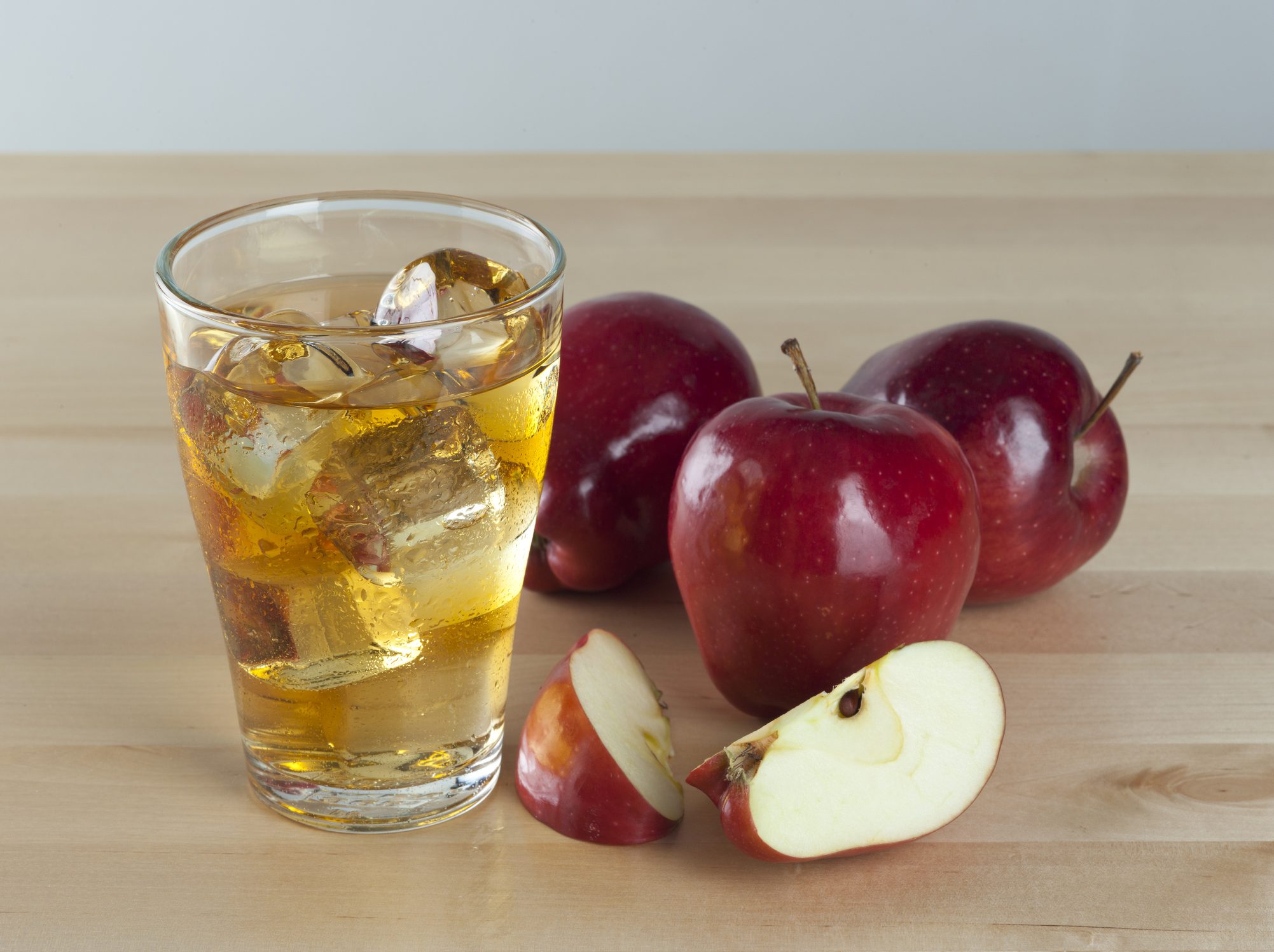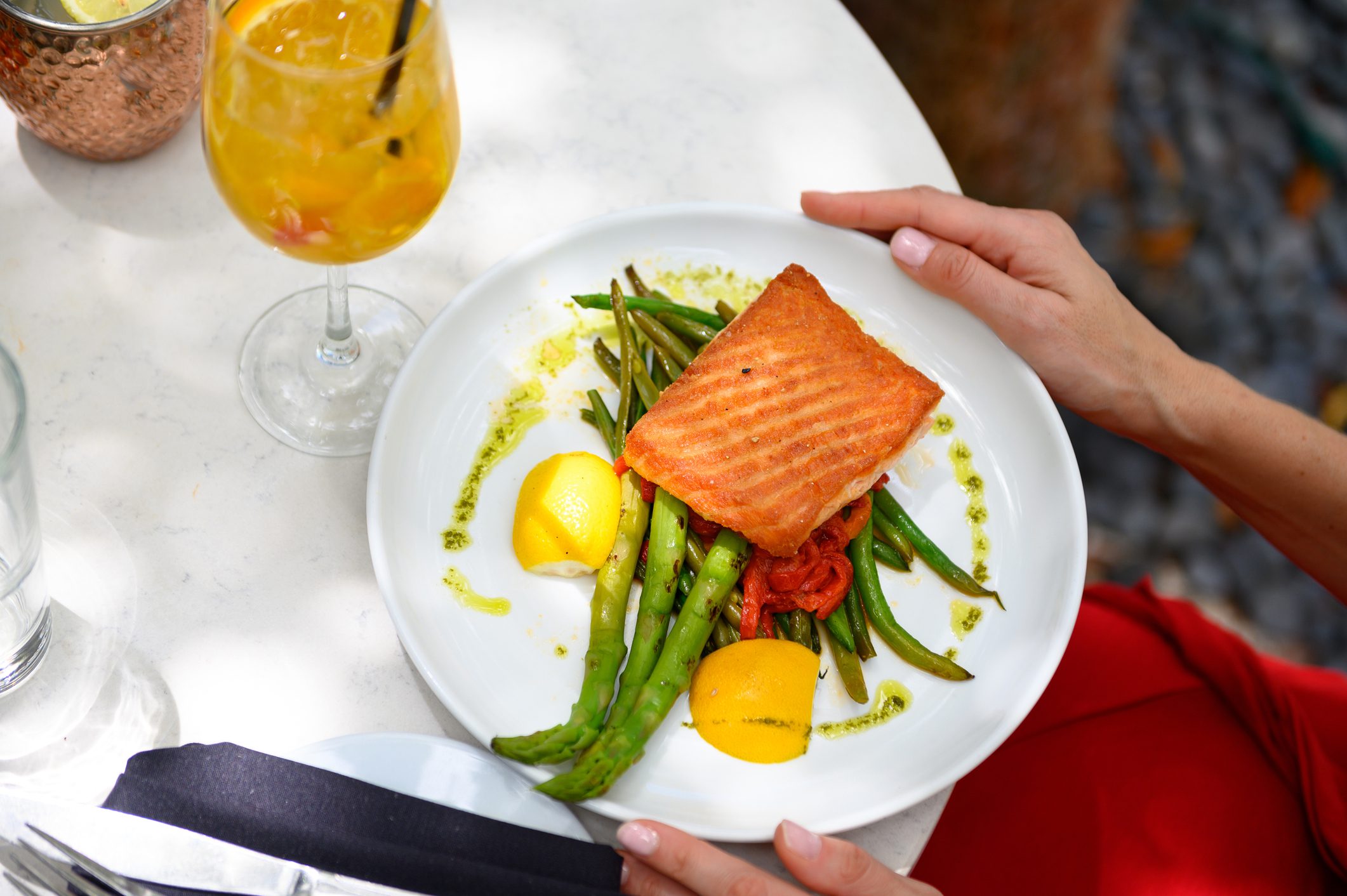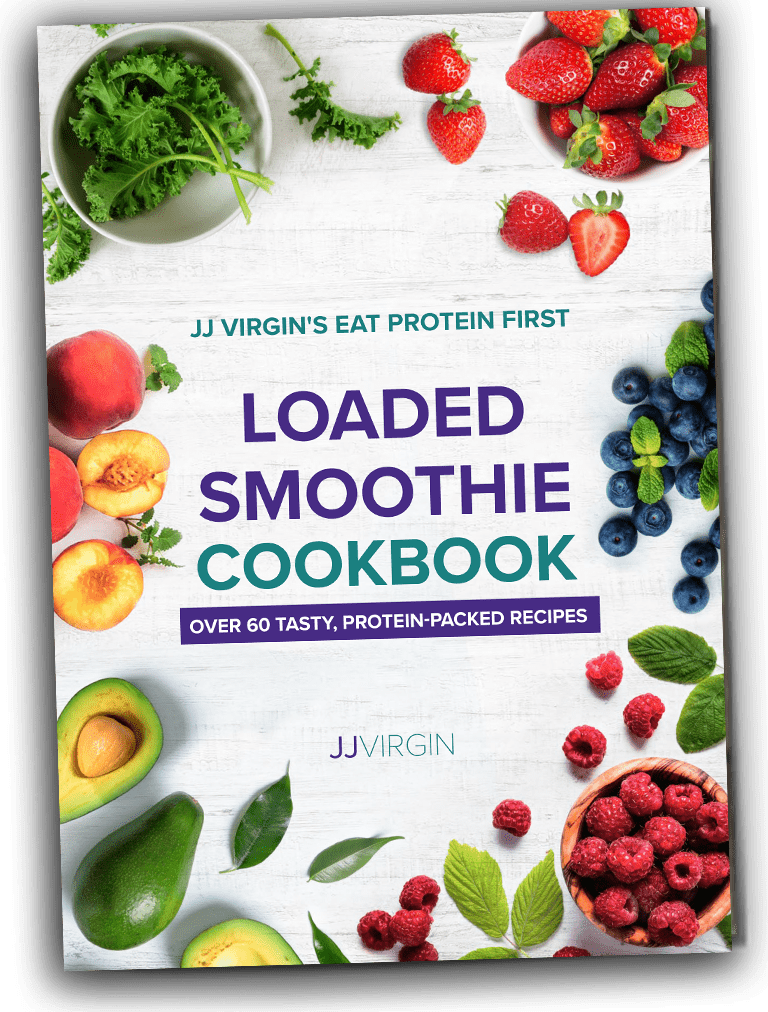Imagine an elementary school lunch where teachers regularly served sugar-sweetened sodas. Parents would have a fit, right? Despite its ubiquity as a so-called healthy beverage, apple juice isn’t any better. In fact, its effects might be even more damaging than soda!
Organic apples are super nutritious. A medium-sized apple contains about four grams of gut-supporting fiber, including pectin. Research shows that this soluble fiber can help balance gut bacteria, provide immune support for conditions like allergies, and help manage inflammation.1
Apples are also rich in vitamin C, potassium, and antioxidants including flavonoids and polyphenols. These and other nutrients help protect the body against free-radical damage and reduce inflammation. I’ve even created healthy apple-based desserts for special occasions, including this Baked Apples with Cinnamon Oatmeal Crumble.
Apples do have some sugar; a medium one contains around 19 grams. When you eat the whole apple, fiber helps buffer that sugar impact. While that’s not a free pass to eat unlimited fruit, it leads to my next point. You wouldn’t sit down and eat four apples, yet you could easily consume the same amount of sugar that they contain in a glass of juice.
When you juice that fruit, you lose the fiber, introducing a sugar wallop to your system very quickly. An apple a day might keep the doctor away, but apple juice can create a harmful sugar overload.
Soda vs. Apple Juice: The Sugar Quota May Shock You
Manufacturers make apple juice by extracting liquid from the fruit, which then undergoes filtration and pasteurization before being bottled or packaged. Jonny Bowden, Ph.D., calls most commercial apple juices “nothing more than sugar water and apple flavoring.”2 He’s not kidding. Ounce for ounce, apple juice has more sugar than a cola:
- A 12-oz cola can contain 23-28 grams of total sugar
- 12 oz of apple juice can contain 24-36 grams of total sugar
Apple juice contains more sugar than soda, but the kind of sugar is equally problematic.
Colas are typically sweetened with high-fructose corn syrup (HFCS), a blend of about 55% fructose and 45% glucose. (Table sugar has about 50% fructose and 50% glucose.) Fruit juice, on the other hand, is almost entirely fructose.
A medium-sized apple has about 9-11 grams of fructose and 6-7 grams of glucose.
Almost every cell can use glucose as a fuel source. Your body converts excess glucose into glycogen, which your liver and muscle cells store for later use. During energy demands such as during exercise or while you’re intermittent fasting, your body can break down that glycogen into glucose.
Fructose behaves differently—this simple sugar beelines straight to your liver, which can overwhelm this hardworking organ’s capacity to process it. Over time, consuming fructose can:
- Make you gain weight. Your liver rapidly converts fructose into fat, increasing your body’s fat storage.3
- Lead to insulin resistance. When your cells “resist” this hormone, insulin can’t get sugar into your cells for energy, so that sugar stays in your bloodstream and creates havoc. Over time, insulin resistance can lead to type 2 diabetes.4
- Overwork your liver. A stressed-out liver can accumulate fat and lead to non-alcoholic fatty liver disease (NAFLD). NAFLD can progress to more severe conditions, such as liver inflammation (non-alcoholic steatohepatitis) and liver fibrosis.5
- Raise blood pressure, increase levels of triglycerides (a type of fat in the blood), and lower levels of HDL (the “good” cholesterol). These factors increase your risk of heart disease and other cardiovascular problems.6
- Disrupt appetite-controlling hormones such as leptin and ghrelin, leading to increased hunger, overeating, and potential weight gain.7
Fructose doesn’t stimulate the release of hunger-regulating hormones, either. As a result, you consume more and don’t feel satisfied.
Yes, you’ll get a little bit of fructose from eating a whole apple, but the fiber and nutrients buffer that fructose and minimize its impact. Eating an apple shouldn’t be a problem for most people. (Enjoying organic apple slices with almond butter can further buffer out that fructose load thanks to its healthy fat.)
Juicing, on the other hand, creates a fructose overload and its accompanying problems.
Apple Juice Alternatives
Apple juice contains more sugar—and the most dangerous kind of sugar, fructose – compared with sodas. Because so many people still see apple juice as healthy, we’re more prone to reaching for second or third glasses (whereas most people would think twice before having a second soda).
Obviously, I’m not arguing that you should drink soda in its place. Skip both, and enjoy these beverages instead:
- Peach & Mint Iced Green Tea
- Superfood Iced Tea
- Peppermint-Thyme Tea
- Apple Cider Vinegar Detox Tea
- 5-Minute Collagen Coffee
Unsweetened organic green tea or black coffee (or sweetened with a little bit of stevia) are both fine. If you’ve really got to have a soda, enjoy Zevia (my favorite!).
Of course, nothing beats pure, filtered drinking water.
Understanding the Sugar Impact of ‘Healthy’ Foods
If you’re thinking, But wait a minute, I always thought apple juice was healthy... I understand your confusion! Most of us were taught that growing up.
When you discover that supposedly healthy foods and drinks contain hidden sugars that can undermine your health and weight loss efforts, you might start wondering where else these covert sugars might be lurking.
The answer is: more places than you might imagine! In the The Sugar Impact Diet, I play sugar sleuth to help you eliminate the hidden sugars holding your health and your waistline hostage from 7 food groups. Dropping your Sugar Impact in these seven categories resets and retrains your taste buds. As a bonus, many clients lose up to 10 pounds in just two weeks.
References:
- Blanco-Pérez F, Steigerwald H, Schülke S, Vieths S, Toda M, Scheurer S. The Dietary Fiber Pectin: Health Benefits and Potential for the Treatment of Allergies by Modulation of Gut Microbiota. Curr Allergy Asthma Rep. 2021 Sep 10;21(10):43. doi: 10.1007/s11882-021-01020-z. PMID: 34505973; PMCID: PMC8433104.
- Bowden, Jonny. The 150 Healthiest Foods on Earth: The Surprising, Unbiased Truth about What You Should Eat and Why (p. 95). Creative Publishing International. Kindle Edition.
- Sievenpiper JL, de Souza RJ, Mirrahimi A, Yu ME, Carleton AJ, Beyene J, Chiavaroli L, Di Buono M, Jenkins AL, Leiter LA, Wolever TM, Kendall CW, Jenkins DJ. Effect of fructose on body weight in controlled feeding trials: a systematic review and meta-analysis. Ann Intern Med. 2012 Feb 21;156(4):291-304. doi: 10.7326/0003-4819-156-4-201202210-00007. PMID: 22351714.
- Basciano H, Federico L, Adeli K. Fructose, insulin resistance, and metabolic dyslipidemia. Nutr Metab (Lond). 2005 Feb 21;2(1):5. doi: 10.1186/1743-7075-2-5. PMID: 15723702; PMCID: PMC552336.
- Roeb E, Weiskirchen R. Fructose and Non-Alcoholic Steatohepatitis. Front Pharmacol. 2021 Feb 8;12:634344. doi: 10.3389/fphar.2021.634344. PMID: 33628193; PMCID: PMC7898239.
- Lê KA, Tappy L. Metabolic effects of fructose. Curr Opin Clin Nutr Metab Care. 2006 Jul;9(4):469-75. doi: 10.1097/01.mco.0000232910.61612.4d. PMID: 16778579.
- Teff KL, Elliott SS, Tschöp M, Kieffer TJ, Rader D, Heiman M, Townsend RR, Keim NL, D’Alessio D, Havel PJ. Dietary fructose reduces circulating insulin and leptin, attenuates postprandial suppression of ghrelin, and increases triglycerides in women. J Clin Endocrinol Metab. 2004 Jun;89(6):2963-72. doi: 10.1210/jc.2003-031855. PMID: 15181085.
*These statements have not been evaluated by the Food & Drug Administration. Products mentioned are not intended to diagnose, treat, cure, or prevent any disease. The views in this blog by JJ Virgin should never be used as a substitute for professional medical advice. Please work with a healthcare practitioner concerning any medical problem or concern.





